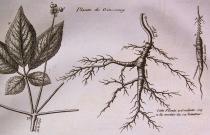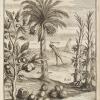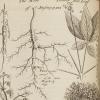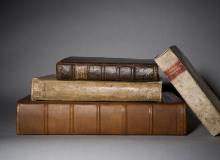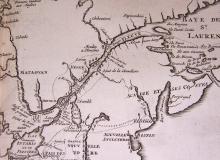Ginseng
Much of the flora and fauna that the Jesuit missionaries wrote about – from tea to fishing cormorants – had already been commented upon prior to them. But the transference of knowledge conducted by the Jesuits was indeed influential all the same. For instance, the work of the Jesuit botanist Pierre Noël Le Chéron d’Incarville (1706-1757) earned him a place as a correspondent of the Academy of Science in Paris, at the same time as he worked in the imperial gardens in Beijing. He was responsible for the introduction to the west of a number of species grown in Asia. So helpful were the combined observations of the Jesuit missionaries that the English botanist Joseph Banks had a bookshelf devoted to Jesuit China works in his library.
The Jesuit writings on ginseng are one example of their work arousing great interest throughout the world.
Pierre Jartoux (1669-1720), who worked as a mathematician, a cartographer and an engineer during his almost twenty years in China, travelled on a number of journeys through North China. He then recorded what he saw in a letter that got circulated through the Jesuit world. French Jesuits in North America - specifically in what was then known as New France - received at least one copy of this 1711 letter. In 1715 Joseph-François Lafitau, then a missionary living among the Iroquois, read this letter in one of the Jesuit houses. Following Jartoux’s own comments, Lafitau surmised that it probably grew in North America as well. He proceeded to investigate this, with assistance from his Iroquois interlocutors, and they readily showed him that ginseng was indeed native to North America, and likewise used medicinally by the Indian peoples. Lafitau wrote up his findings and published, “The note concerning the precious plant ginseng” (Mémoire...concernant la précieuse plante du gin-seng) in 1718, which earned him the title “the discoverer of ginseng in North America.” This was even though indigenous communities had been using it for centuries. Afterwards, for a time, this ginseng was even sold into China.
Lafitau then returned to France in 1717. He published many other books, including a history of the customs of the North American Indians.
